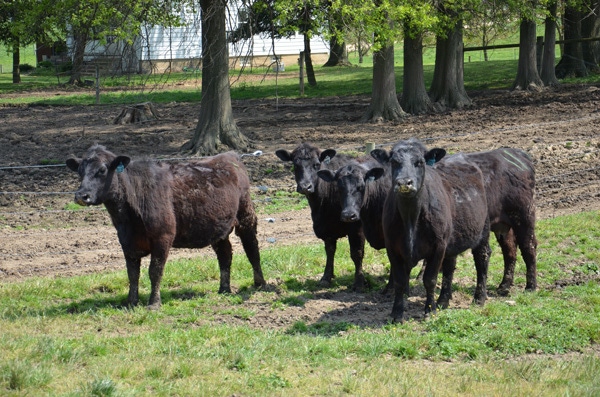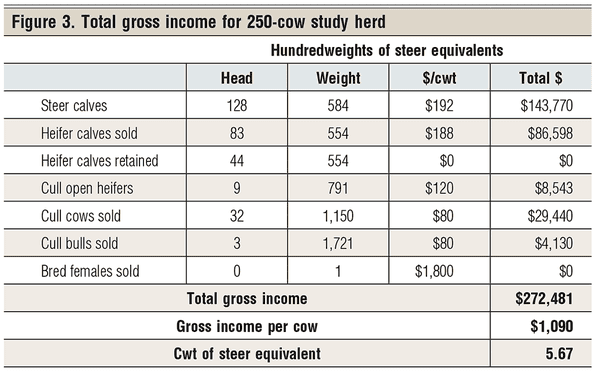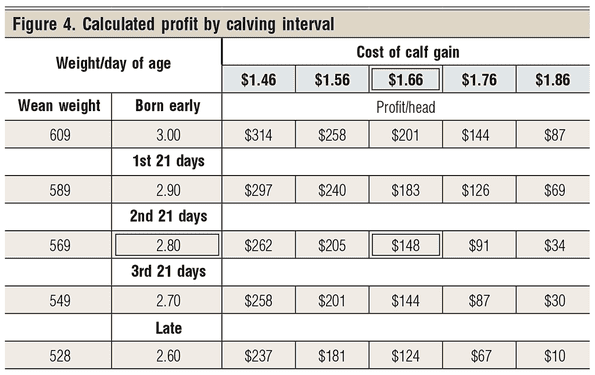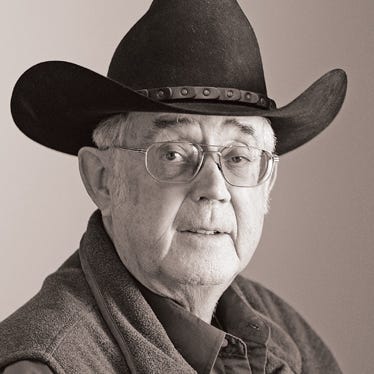
As beef cattle prices work their way down in the current cattle cycle, it behooves ranchers to focus on lowering costs of production. In all my years of working with ranchers on costs of production, I found that the most common way to lower production costs is to increase production per cow.
But to increase production per cow, you first have to measure it and set a benchmark. The best way I know to measure production per cow is with production records.
With production records, all production measures can be related back to individual cows, and the individual cows can be sorted into different production groups. In this day and age, it makes sense to have computerized production records so you can easily summarize your production data by groups of cows.
My question to you is: Which group of cows in your herd is making you the most profit?
I like to see production data summarized first for the total herd. Then you can summarize your production by heifers and mature cows divided into 21-day calving intervals. I even like to see your production data summarized by age of cows.
I am most familiar with North Dakota’s CHAPS computer program. CHAPS stands for Cow Herd Appraisal Performance System, which was designed and operated by Kris Ringwall, North Dakota State University. CHAPS provides the summarizations mentioned above.
Production records do not have to be hard to collect. If you have your cows individually identified, tag the calves as they are born and weigh calves at weaning, you can stratify your cow herd by 21-day calving intervals.
I suggest production cost per pound of calf produced can be lowered by changing your calving interval. Let me show you why I am emphasizing this in today’s economic environment of lower calf prices.

Let’s review my eastern Wyoming-western Nebraska study herd’s data for 2013. Figure 1 presents the economic production cost summary for this study herd. The average production cost was projected at $942 per cow. The average age of the calves weaned was 203 days. The average weight per day of age was 2.80 pounds. The average breakeven cost of calf sold was $1.66 per pound. At weaning time in 2013, the local sale barn price was $192 per cwt for steer calves.
Figure 2 gives an economic summary of this beef cow herd in 2013. The gross income from all sources totaled to $1,090 per cow.

Figure 3 details the different gross income components for the herd. Note that all cull income is also included; but all herd replacement costs, including replacement bulls, are included in the costs of production.

The herd’s total production costs for the year totaled $942 per cow. This generated a $148 net return per cow. I am going to argue, however, that the profit per cow was different depending on where the cows calved in the herd’s calving interval.
Figure 4 sorts the cow herd into five different calving groups based on when they calved in the calving interval. The five intervals are:
Calved early
Calved in the first 21 days
Calved in the next 21 days
Calved in the next 21 days
Calved late
By the way, how do we determine when the calving interval starts? Beef Improvement Federation guidelines suggest that the calving interval starts when the third mature cow calves — not heifers, but mature cows.
CHAPS benchmark data indicate that 59% of cows calve in the first 21 days, and 89% of the cows calve in the first 42 days. This implies that 11% of the cows calve in the third 21-day period or late.
Figure 4 presents my economic summary for this herd by presenting my calculated profit per cow based on the average cost of calf gain ($1.66) and the calving interval. The boxed numbers are the herd averages for weight per day of age, cost of gain and profit per cow.

Calf selling price for each line was adjusted for the actual weaning weight of that line. That is, the heavier the calf weight, the lower the price based on eastern Wyoming-western Nebraska sale barn market conditions for weaning time in 2013.
The herd’s average profit is calculated to be $148 per cow. If you assume that the cost per cow is the same for early-calving cows as for late-calving cows, then cows calving in the first 21 days weaned heavier calves (averaging 589 pounds, according to the study herd’s CHAPs records — 20 pounds above herd average) and netted $183 per cow. This is a $35 improvement over the herd’s average.
On the other hand, those cows calving in the third 21-day interval had calves weighing less at weaning time and thus generated $144 profit per cow — $4 lower than the herd average. Those calving in the “late” category netted $124 per cow, or $24 per cow below average.
 Figure 4 is based on the costs of production being constant over all periods of the calving interval. I believe that this assumption is reasonable, as I do not remember any of my past clients who practiced different production programs by calving interval. The one exception would be where heifers were all calved early before the mature cows. That was not the case in this study herd.
Figure 4 is based on the costs of production being constant over all periods of the calving interval. I believe that this assumption is reasonable, as I do not remember any of my past clients who practiced different production programs by calving interval. The one exception would be where heifers were all calved early before the mature cows. That was not the case in this study herd.
The other columns were inserted in Figure 4 to show the impact of different costs of calf gain on per-cow profits.
In summary, let’s assume that the cost of production per mature cow, excluding heifers that calve, does not change with calving interval, so that we can use the herd’s average cost of producing a pound of calf. This suggests that ranchers can lower production costs by reducing the calving interval for their cow herds.
Production records, however, are needed to document the economics of moving cows up in the calving interval. Finally, I suggest that the group of cows that is making you the most profit is the group calving in the first 21 days of your calving interval.
You might also like:
4 facts to debunk "Meat is horrible" article
60 stunning photos that showcase ranch work ethics
Best risk strategy options for cattle producers
Does it really take six years to cover your costs on a cow? NO!
Photo Gallery: Get to know the 2016 Seedstock 100 operations
About the Author(s)
You May Also Like





